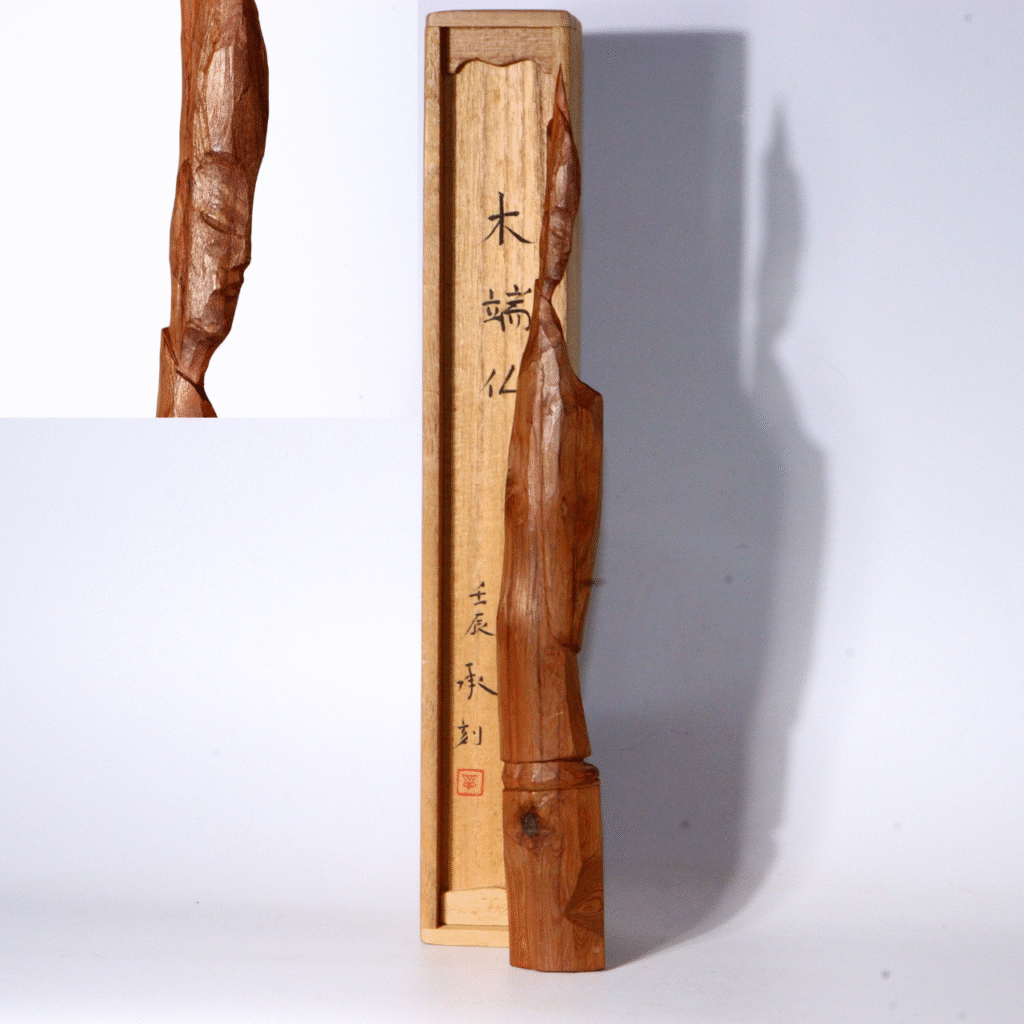
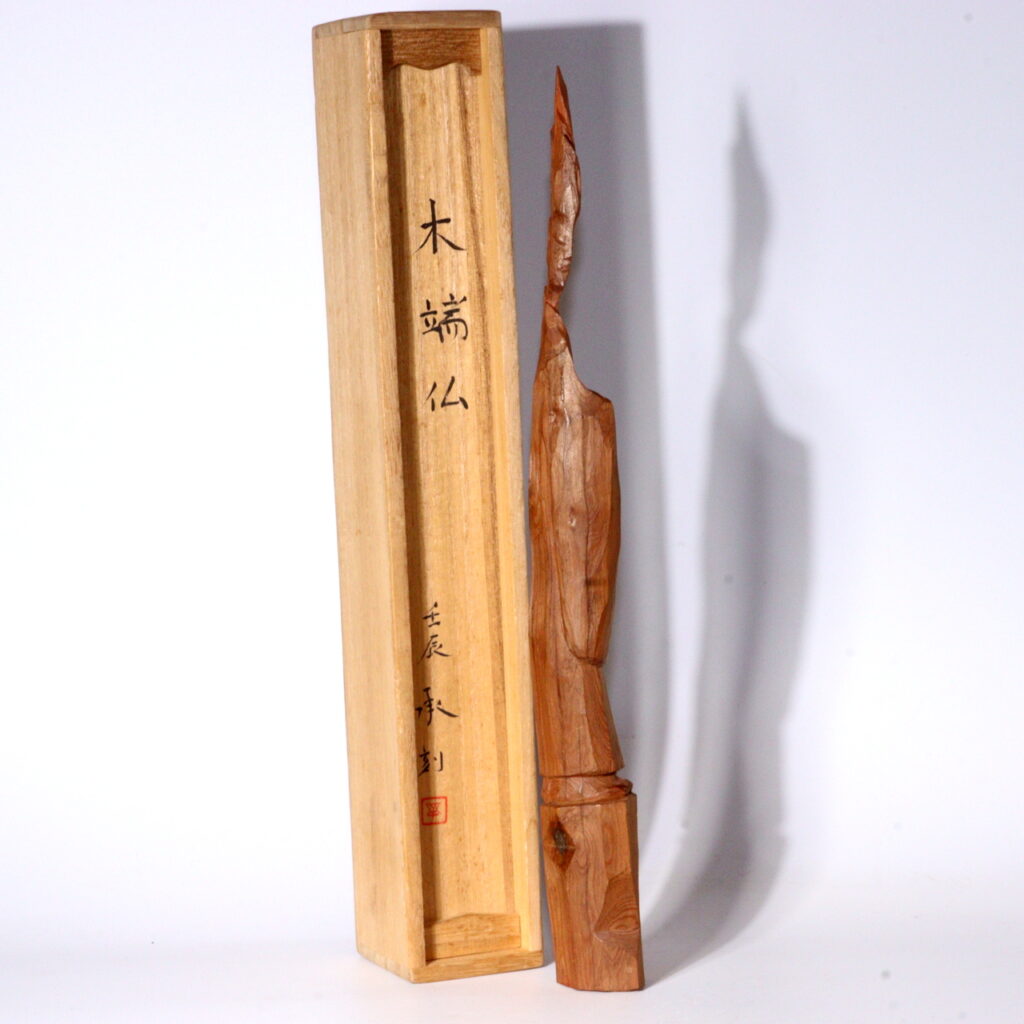
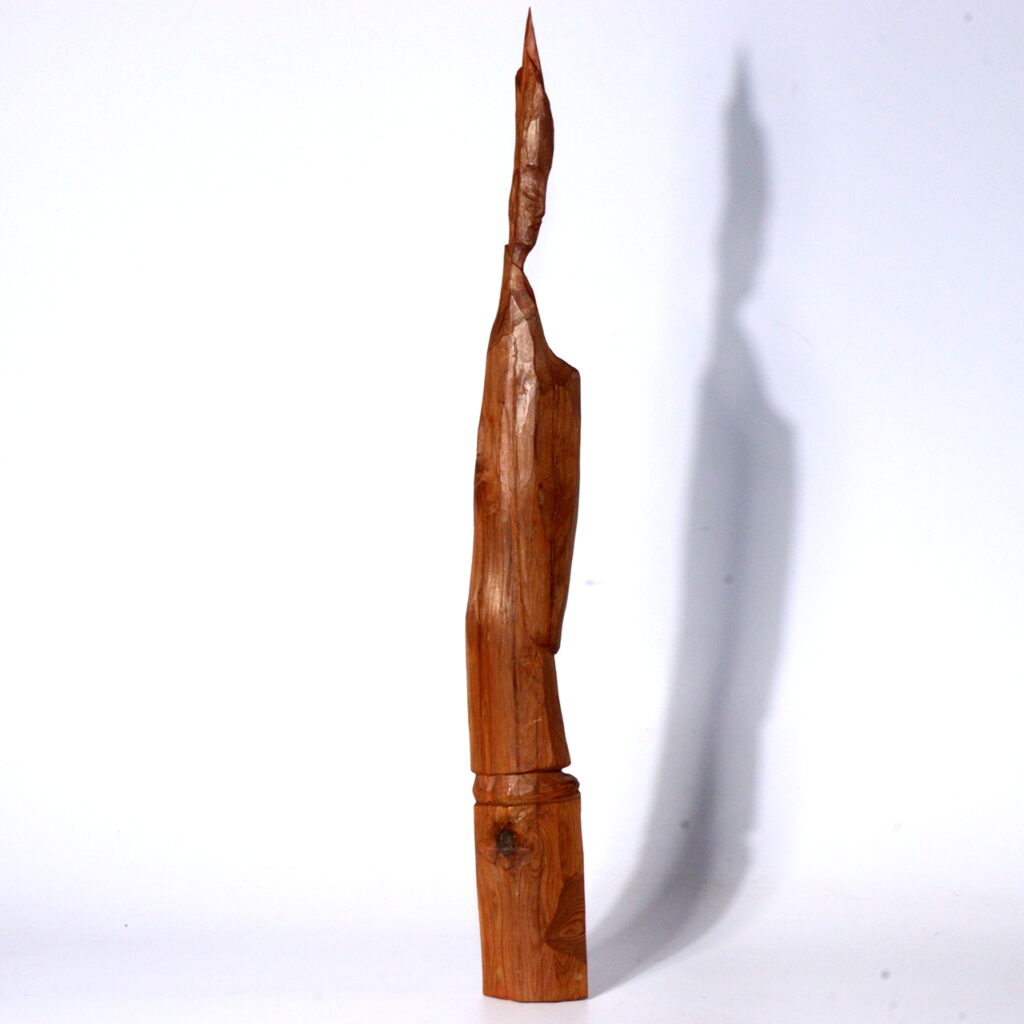
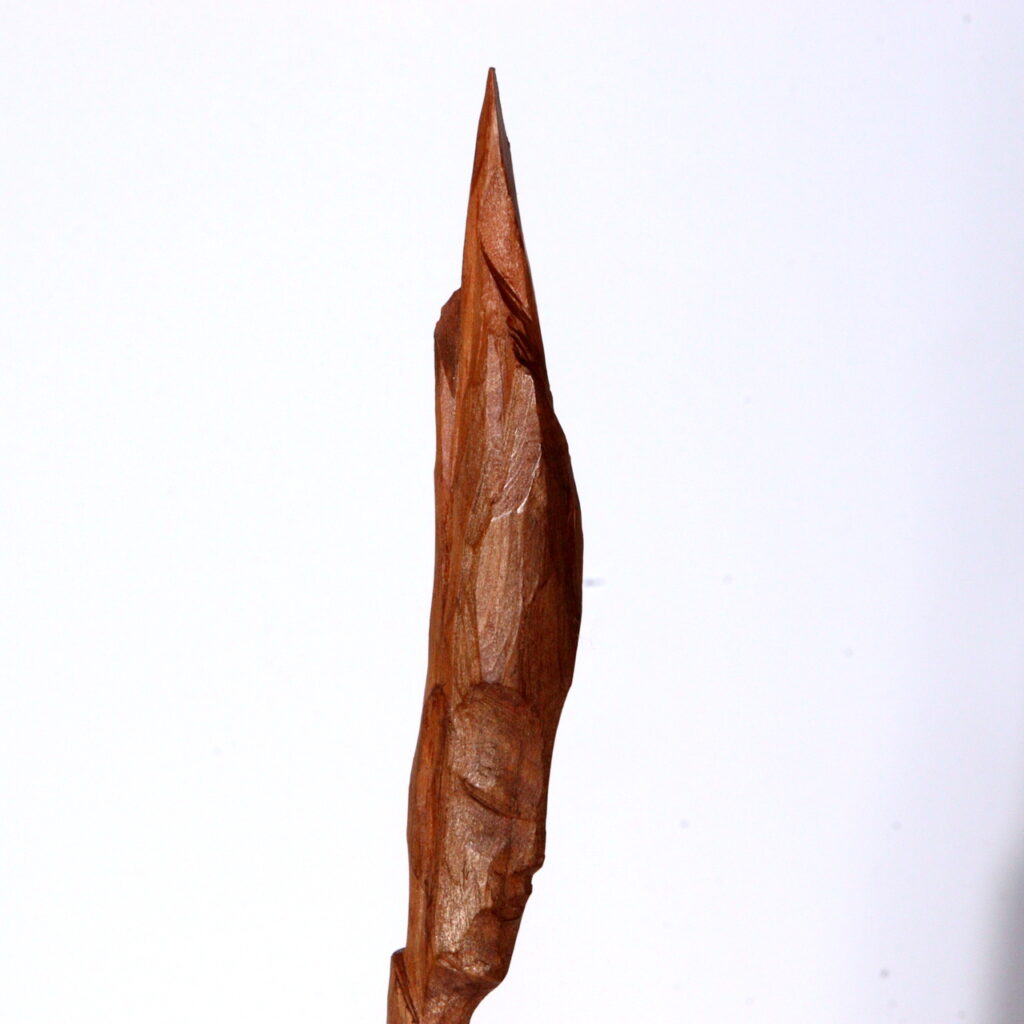
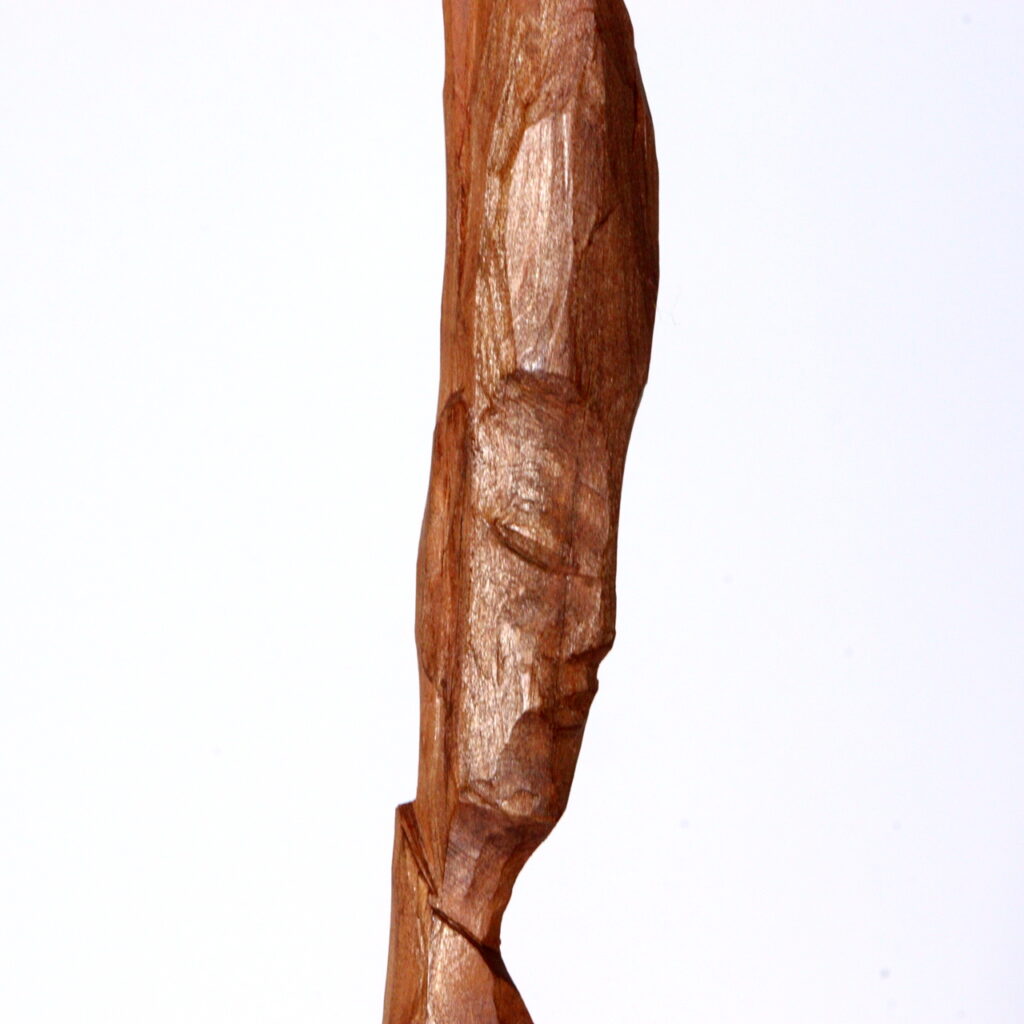
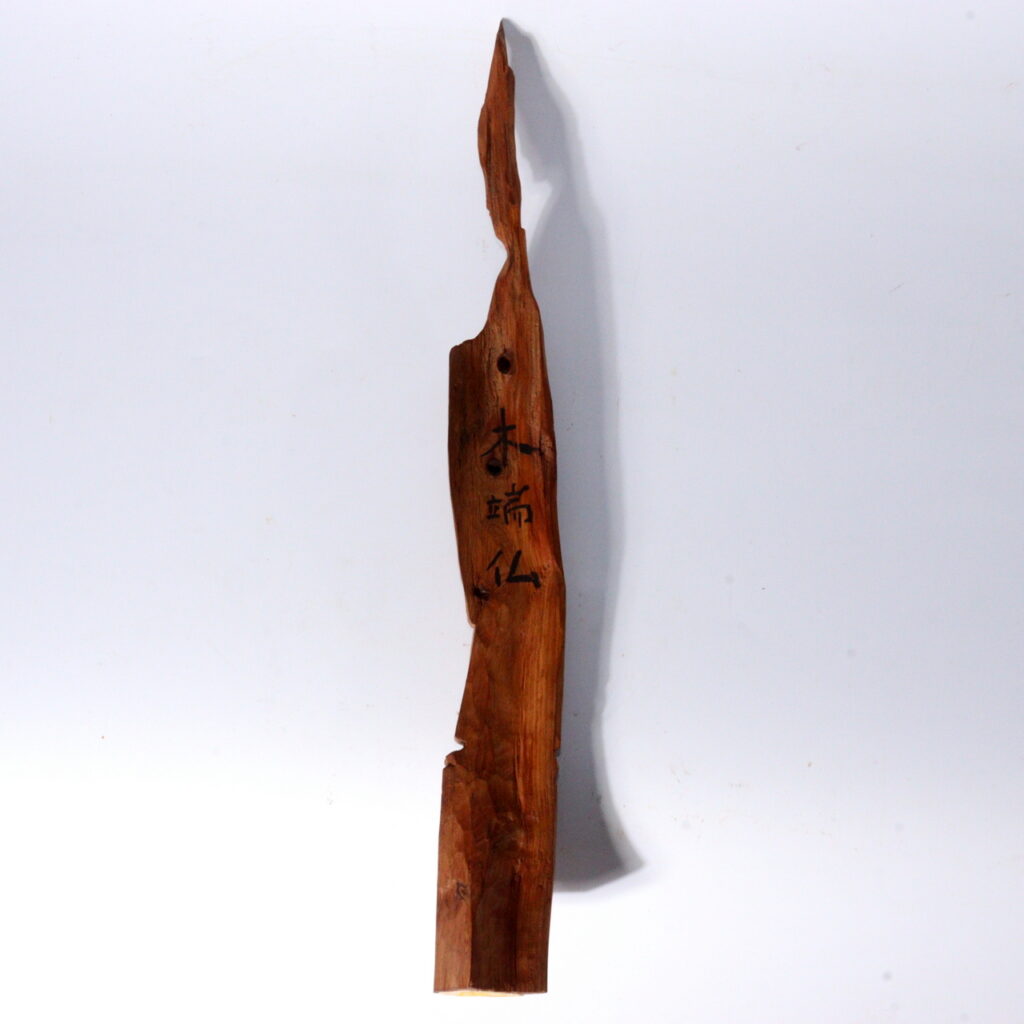
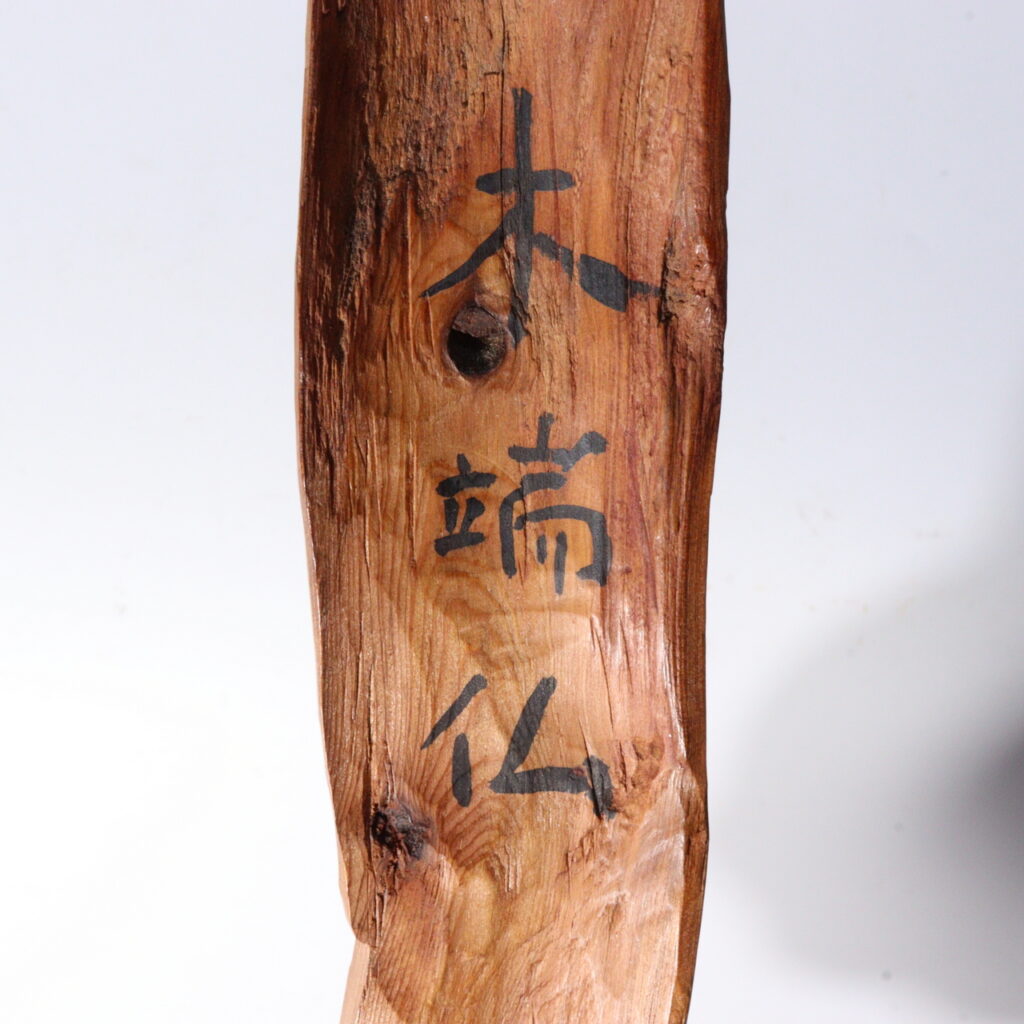
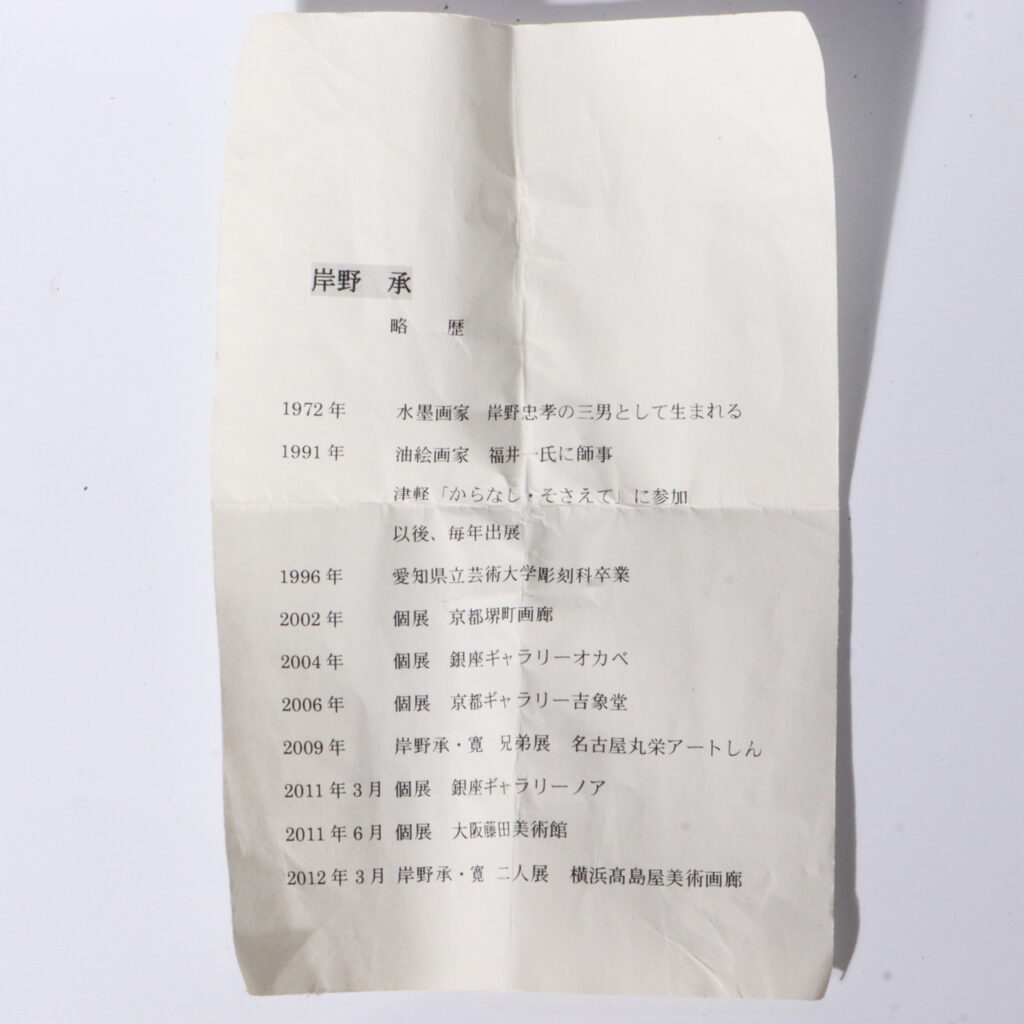
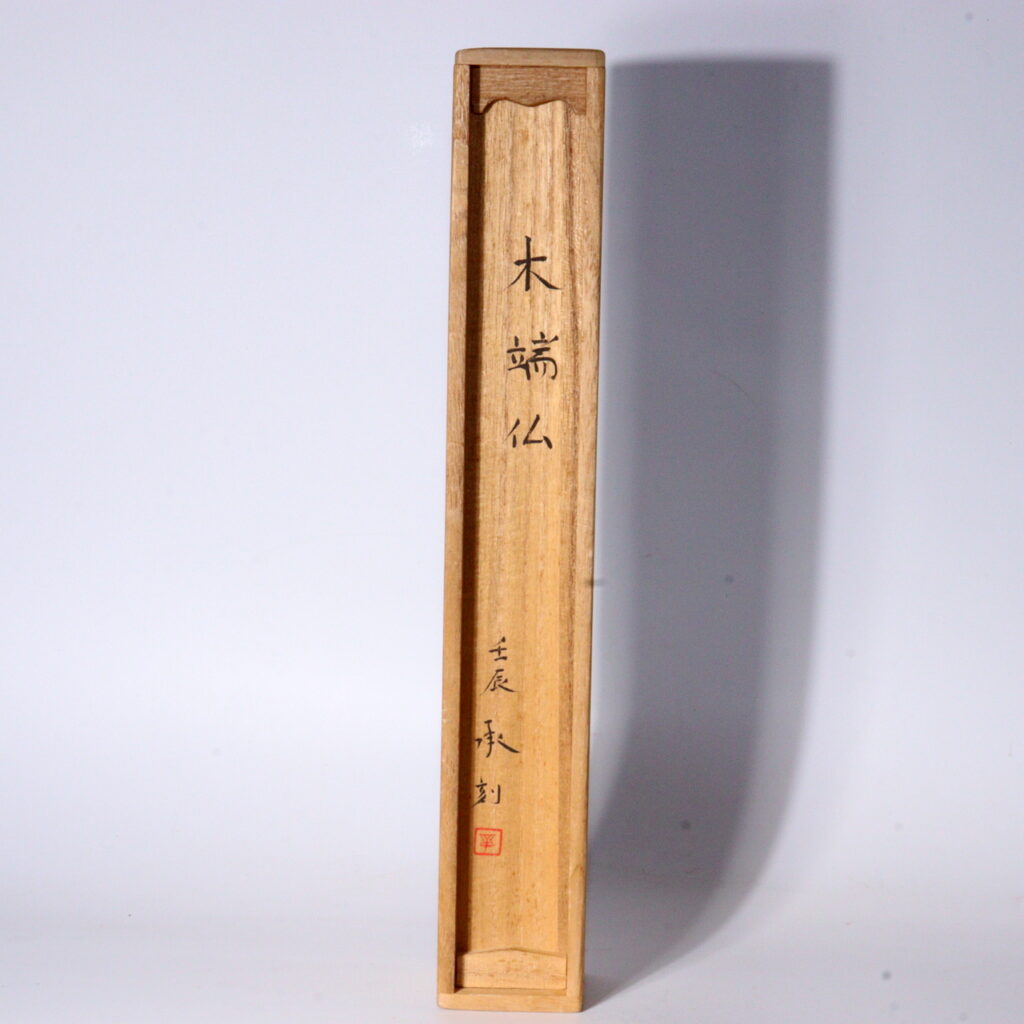
In the world of Japanese antiques and Buddhist sculpture, few forms speak to both spiritual simplicity and artistic modernity quite like the Koppabutsu. This compact wooden Buddha, sculpted by contemporary Japanese artist Kishino Shou, represents a profound continuity between tradition and personal creativity—where driftwood meets devotion.
The Story Behind the Piece: From Enku to Kishino
The roots of the Koppabutsu (“wood fragment Buddha”) tradition trace back to the Edo-period monk Enku (1632–1695), who famously carved over 100,000 Buddhas during his pilgrimage across Japan. Enku worked with koppas—small, irregular scraps of wood—to produce portable, rustic figures that comforted farmers, travelers, and villagers. Their humble size and expressionless serenity made them accessible and beloved, especially among the working class.
In this lineage steps Kishino Shou, a contemporary sculptor inspired by a childhood spent collecting driftwood and observing life in nature. Much like Enku, Kishino breathes soul into wood. His pieces are shaped not against the grain, but with it—respecting the irregular form and aged texture of the material, while offering modern reinterpretations of classical Buddhist icons.
Artistry and Symbolism: What Makes This Sculpture Unique
This sculpture is a poetic fusion of the past and present:
- Material: Natural driftwood, minimally altered to retain its organic beauty
- Technique: Expressive yet unrefined carving, echoing Enku’s raw style
- Theme: A solitary Buddha rendered with elemental grace
- Intention: A meditative aid, decorative object, and spiritual companion
Rather than imposing form, Kishino Shou draws the Buddha from the wood. Each line reflects the wood’s life, creating a piece that is not only about the Buddha, but about impermanence, resilience, and rebirth—key themes in Japanese Buddhist aesthetics and wabi-sabi philosophy.
Why It Resonates with Global Collectors
For international collectors of Buddhist art, Japanese wooden sculpture, or folk traditions, this piece holds multiple layers of meaning:
- It represents the continuation of Enku’s legacy through a modern lens
- Its small size and handmade character recall the intimacy of devotional objects
- The use of driftwood appeals to sustainable art and nature-based design values
- Its minimalist style blends seamlessly into contemporary interiors, while retaining deep cultural roots
Whether you’re a serious collector of Meiji-era religious artifacts, or simply someone moved by contemplative art, this Koppabutsu brings both history and humanity into your space.
A Living Sculpture from the Heart of Japan
This piece by Kishino Shou is not just a sculpture—it is a story carved from memory, tradition, and nature itself. In a world of polished perfection, its quiet irregularity offers a space for reflection, compassion, and connection.
🌀 If sold out, you can explore similar treasures from our curated Japanese Buddhist and folk art collection:
🔗 https://koedo-sun-art.com